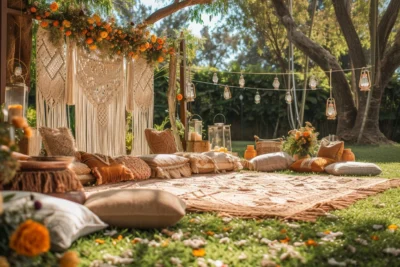
How to Optimize Space in a Small Garden

There’s something quietly heroic about growing a garden in a space no bigger than a dining table. While some people with sprawling lawns let their yards become graveyards for broken toys and forgotten patio furniture, you, you dream of mint sprouting in teacups and tomatoes dangling from a trellis.
And you’re right to dream. Because when done with care, creativity, and a touch of rebellion, a small garden can become a living patchwork of flavor, color, and calm. Small doesn’t mean less. In gardening, it often means smarter.
Let’s explore how to turn your limited space into something rich, green, and alive.
- Start With a Plan (or Risk a Miniature Jungle)
- Choose Plants That Behave Well in Tight Quarters
- Grow Up, Not Out
- Use Containers and Raised Beds Strategically
- Try Companion Planting
- Don’t Ignore the Edges and Corners
- Think in Three Dimensions
- Furniture That Folds, Tools That Hide
- Collect Rain, Save Water
- Keep It Clean, Keep It Growing
- Conclusion: Modest in Size, Mighty in Impact
Start With a Plan (or Risk a Miniature Jungle)
Before you buy a single seed, step back and assess.
Small gardens leave no room for improvisation. Treat your plot, however humble, like a precious puzzle. Measure its dimensions. Observe the sun’s path. Where does the light hit, and for how long? Shade, wind, and drainage are all part of the equation. The more you know your space, the more it will give back to you.
Sketch it out, even if it’s on a napkin. A tiny blueprint now saves major frustration later.
Choose Plants That Behave Well in Tight Quarters
Your space is limited, so choose guests with manners. Herbs like basil, thyme, and parsley thrive in containers and ask for little. Cherry tomatoes, bush beans, and compact pepper varieties deliver more fruit per square foot than their larger cousins.
Stick to dwarf or “patio” varieties; they’re bred for small spaces and won’t try to take over your balcony like a botanical Napoleon.
Also: group plants by need. Sunlovers in one area, shade dwellers in another. This makes care easier and plants happier.

Grow Up, Not Out
Vertical gardening is your secret weapon. When you can't spread out, climb.
Install trellises, hanging baskets, wall-mounted planters, or stacked shelves. Grow cucumbers or peas on a trellis, strawberries in a hanging basket, or lettuce in vertical pockets attached to a fence.
Suddenly, your garden isn’t just a floor; it’s a wall of life.
Use Containers and Raised Beds Strategically
Raised beds create order and improve soil quality. They also make small spaces look structured and intentional. Shape them to fit corners, curves, or even wrap around furniture.
Containers are ideal for flexibility. Use large ones for deep-rooted vegetables like tomatoes, and smaller pots for herbs or flowers. Just make sure they have drainage holes and good potting mix.
And don’t be afraid to move things around, gardens, like people, benefit from the occasional change of scenery.
Try Companion Planting
In tight spaces, every relationship matters. Companion planting means putting friendly plants together to boost growth and repel pests.
Tomatoes love basil. Beans enrich the soil for greens. Marigolds keep insects away. These combinations maximize output without wasting space, and they’re pretty too.
Think of it as social engineering for plants.
Don’t Ignore the Edges and Corners
Every nook has potential. A narrow path? Line it with thyme. An unused corner? Add a vertical planter or stack of pots. Window boxes are perfect for shallow-rooted herbs and flowers, and they add color to otherwise blank railings.
The key is to stop thinking in square footage and start thinking in layers.
Think in Three Dimensions

Design your garden like a stage: tall plants in the back (tomatoes, sunflowers), mid-sized in the middle (peppers, lettuce), and low-growers at the front (spinach, creeping herbs). This layering creates harmony, maximizes sunlight, and avoids shading out smaller plants.
It also makes your garden look lush, full, and far bigger than it actually is.
Furniture That Folds, Tools That Hide
If your garden is also your patio or relaxation zone, opt for foldable or stackable furniture. Benches with hidden storage are a godsend. The more adaptable your setup, the more room you have for both plants and people.
Tidy spaces grow better. And feel better.
Collect Rain, Save Water
Yes, even in a small garden. Slimline rain barrels tuck neatly into corners and can collect enough water to reduce your dependence on the tap. It's sustainable, efficient, and, let’s be honest, a little satisfying.
Watering with captured rain feels like gardening karma.
Keep It Clean, Keep It Growing
Small gardens become chaotic faster than you can say "overwatered basil." Use hooks, crates, and shelves to keep tools off the ground. Clean paths, organized pots, and defined edges make everything feel more spacious.
A tidy garden is a calm garden. And a productive one.
Learn how to make the most of every inch in your small garden. This video offers practical tips on vertical gardening, smart plant choices, container use, and space-saving strategies to turn even the tiniest balcony or patio into a thriving green space. Perfect for urban gardeners ready to grow more with less:
Conclusion: Modest in Size, Mighty in Impact
Your garden may not sprawl across acres, but it can still overflow with life. It can feed you, calm you, and surprise you.
When space is limited, everything matters more. Every decision has impact. Every plant earns its place. And the result? A space so alive, so intentional, it might just make your neighbors with bigger yards a little jealous.
So go on, plant your basil, hang your strawberries, let your beans climb toward the sky. Big dreams were never meant to be limited by square footage.
If you want to see other articles similar to How to Optimize Space in a Small Garden you can visit the category Garden Design.




Leave a Reply